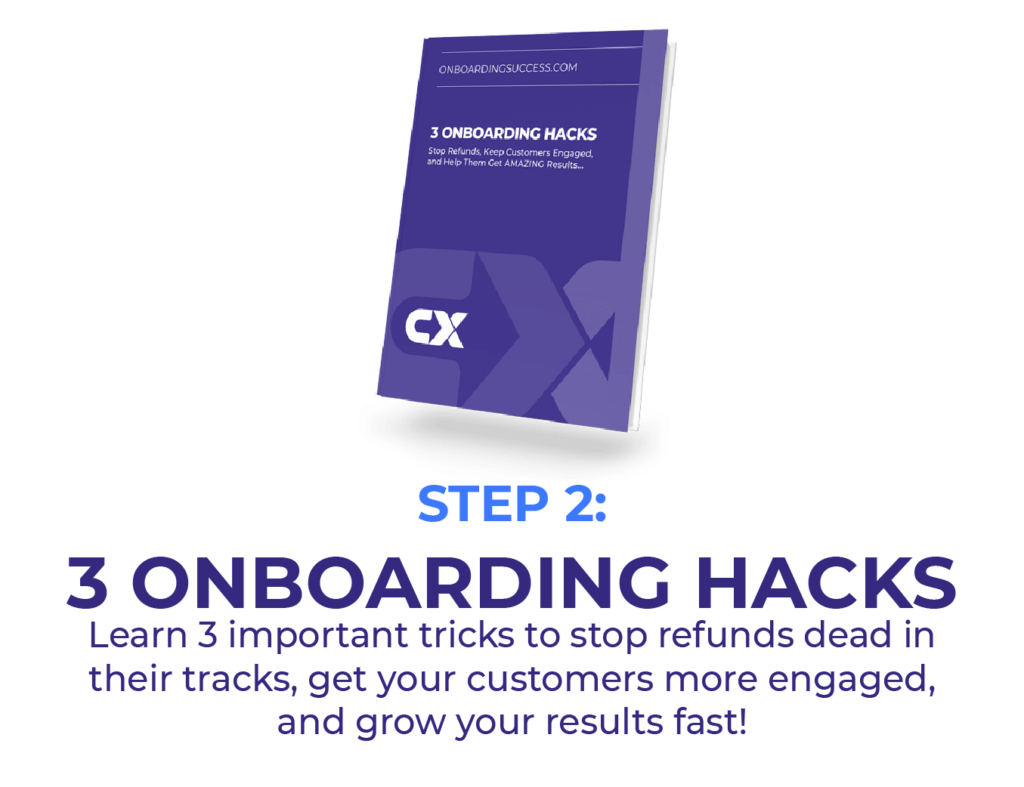While the idea of “SET IT AND FORGET IT” may have been the best phrase ever used on an informercial, it is NOT a strategy for your business – especially when it comes to your Customer Experience and Onboarding!
(Not sure what I’m talking about – check out this short video…)
You’ve built your business from the ground up. You have a great product or service, and you’re ready to start onboarding your customers. So, what’s the best way to do it? Many people believe in the “set it and forget it” method: that is – you create an automated onboarding process and let it run in the background while you focus on other aspects of your business. But this isn’t the best strategy for growing your business. You must be an active participant and evolve it over time. Here’s why.
First, let’s define what we mean by “onboarding.” Onboarding is the process of helping your customers get acclimated to your product or service. This can include everything from giving them a tour of your website to sending them helpful email tips to answering their questions on social media. It’s important to make sure that your onboarding process is tailored to each individual customer so that they have the best possible experience with your business.
The problem with the “set it and forget it” method is that it doesn’t allow you to build relationships with your customers. If you’re not actively engaging with them, they’re likely to forget about you as soon as they find something else that meets their needs. If you want to grow your business, you need to create an onboarding process that encourages customers to keep coming back.
Here are a few tips for creating an effective onboarding process:
1) Keep it personal:
Customers should feel like they’re being communicated with as individuals, not as part of a faceless mass. You can do this by addressing them by name whenever possible and tailoring your communications to their specific needs.
2) Make it Interactive:
Find ways to get customers interacting with your product or service from the very beginning. This could include anything from asking them to answer a survey about their needs to giving them a tour of your website or product.
3) Encourage Feedback:
Throughout the onboarding process, give customers opportunities to provide feedback about their experience. This will not only help you improve your process, but it will also make customers feel like they’re being heard and valued.
4) Be Available.
Make sure that customers know that they can reach out to you (and/or your team) with questions or concerns at any time during the onboarding process—and after!
5) Take a Hands-on Approach:
Don’t be afraid to get involved in the onboarding process yourself! There’s no Substitute for one-on-one interaction when it comes to building relationships with customers.
6) Keep it Short and Sweet:
No one wants to spend hours filling out forms or reading through long emails when they’re just trying to get started with a new product or service. In general, keep communications clear, concise, and interesting so that customers don’t get overwhelmed or bored. Remember, ONBOARDING is not housekeeping and logistics – it’s about helping people find their way and have a smooth transition.
7) Set Realistic Expectations:
Customers should know what they can expect from your product or service—and what you expect from them! Set realistic expectations from the very beginning so that there are no surprises down the road.
8) Reward and Recognize Success:
People love doing what they are REWARDED and RECOGNIZED for doing…so make it a part of your process to pay close attention to the progress people are making. No achievement is too small. If you’re teaching them how to host a live event, reward and/or recognize them for simply setting the date! Little – is HUGE!
Creating a successful customer onboarding program is essential for any business that wants to grow its customer base. However, simply “setting it and forgetting it” is not enough. You need to take an active role in developing a relationship with each individual customer if you want them to stick around for the long haul.
By following these tips, you can create an effective customer onboarding program that will help you build lasting relationships with your customers—and grow your business in the process!














